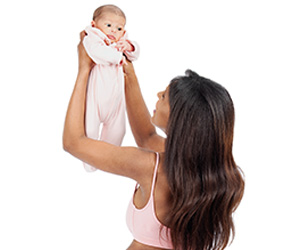Ciska Thurman finds out how to prepare for your little one’s arrival
It’s a good thing babies need nine months to incubate. Can you even imagine preparing for (probably) your biggest life event thus far in any less time? There’s the low-down about what to expect, and then there’s ‘The Stuff’: all of that baby paraphernalia you’ve not had to make head or tail of – until right now.
On your marks
The first trimester is primarily about coming to terms with all the physical changes in your body. In terms of their development, it’s the most crucial time for your growing baby, so any spare time you have should be channelled into rest, rest and more rest. If your personality predisposes you towards worrying about baby prep this early, re-route your anxiety into research – browse baby magazines and the internet for ideas around decor and baby products. Familiarise yourself with what’s local or locally available and save yourself some stress – and cents – down the line.
Get set…
The second trimester usually involves making any physical changes in the home, such as decorating a room for baby. Enter your nesting instinct. Whether you are naturally inclined to organising or not, the instinct to prepare your nest is strongest during this time. Roll with it, but avoid making impulse buys before you’ve shopped around.
Andy Gelman, preparation consultant to parents-to-be, says the perfect time to start planning is when you’re about five months pregnant. He has found that most parents buy during the final two to three months, getting the bigger items first, and leaving the ‘smalls’ for last. ‘What most expectant parents don’t quite realise is how important these “smalls” are. You can manage without a cot, compactum and pram, but you can’t manage without nappies and clothes.’
So start small and cover only the essentials. All the nice-to-haves can be purchased (if they become have-to-haves) along the way. And keep things (including equipment, lotions and potions) simple. Once you have introduced something, your baby will tend to expect it. Use it if it’s addressing an identified need or problem; but don’t introduce it just for the sake of it.
Go!
The third trimester should be all about tweaking your preparations, not about scrambling into panic mode. If you’re lucky, a few pals will shower you with gifts, which, if well co-ordinated, may just knock off those last few items on your to-get list. Rather than making rushed, emotional purchases, use this time to see friends, get away with your partner and prepare your mind and body for the imminent arrival of your little bundle of joy.
Word from the wise
‘Spend money on buying the right products that will help you parent, rather than on what looks good. Keeping up with the Joneses is not a great idea when it comes to baby goods,’ says Andy.
Consider ergonomics and practicality first. For example, ensure your changing surface is 900 mm high (standing, not bending, height), and ideally invest in a cot with an adjustable base (lowering a little baby to the ground over and over will cost you in physiotherapy bills).
Checklist, smalls
• Mom Stretch panties and maternity pads (for the hospital), disposable breast pads, feeding bras, nipple cream, pregnancy supplements, open-down-the-front pyjamas
• Baby Newborn-sized nappies, bum and aqueous cream, cotton wool, surgical spirits, receiving blankets, clothes (body vests and Babygros)
• Medicine cabinet Digital thermometer, antibacterial ointment and so on.
Checklist, bigger items
• Bassinet or cot
• New mattress and waterproof linen,
• Changing surface and mat
• Baby bath
• Car seat
• Pram
Money-saving strategies
• Create your own compactum Buy a workman’s bench from your local hardware store – ideally one with shelves beneath that you can furnish with cute containers. Assemble, sand away rough edges and sharp corners, and paint.
• Welcome all pre-loved items Say ‘yes’ to clothes, toys and baby gadgets from friends who offer. You’ll be amazed at the pay-it-forward mommy sisterhood that is just waiting to share the same generosity from which they benefitted.
• Think unisex Don’t go all pink or blue. Choose unisex shades and styles, so your next little one can enjoy these items too.







